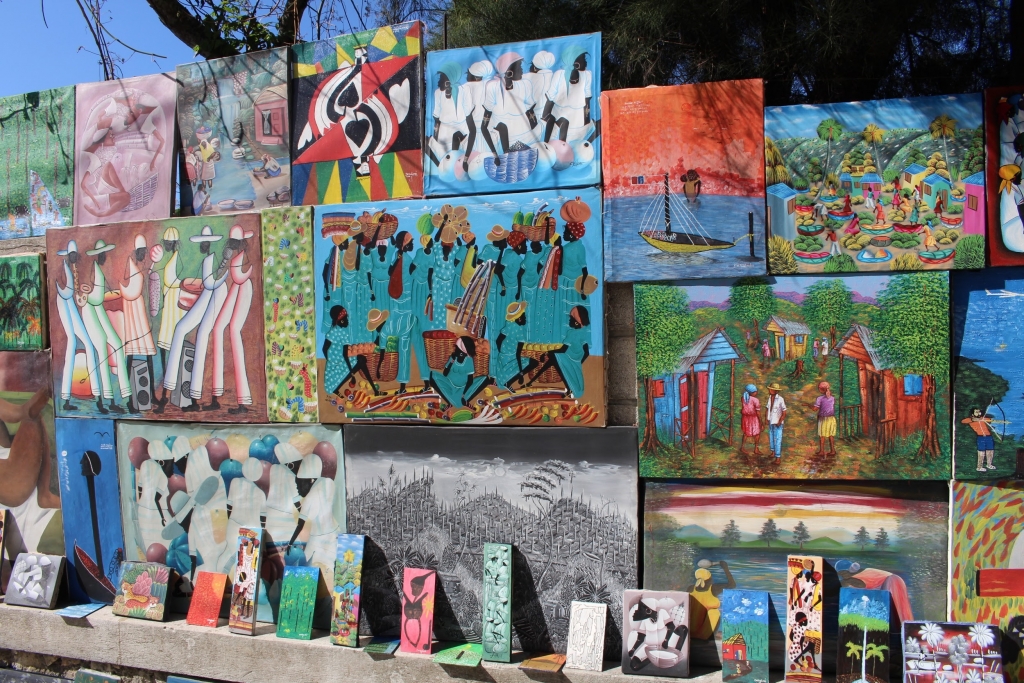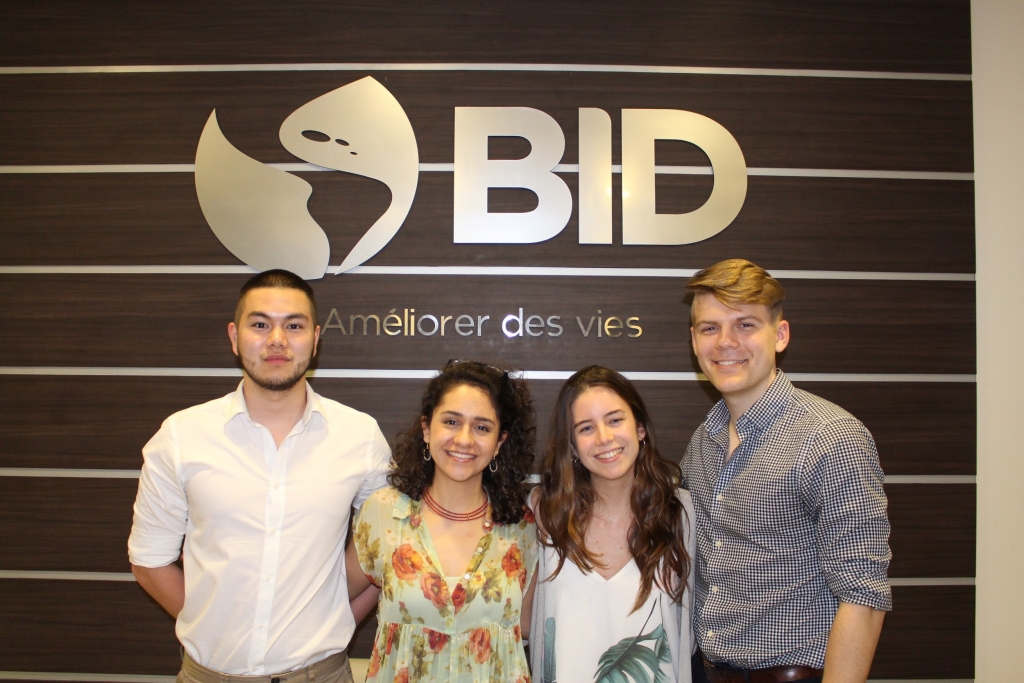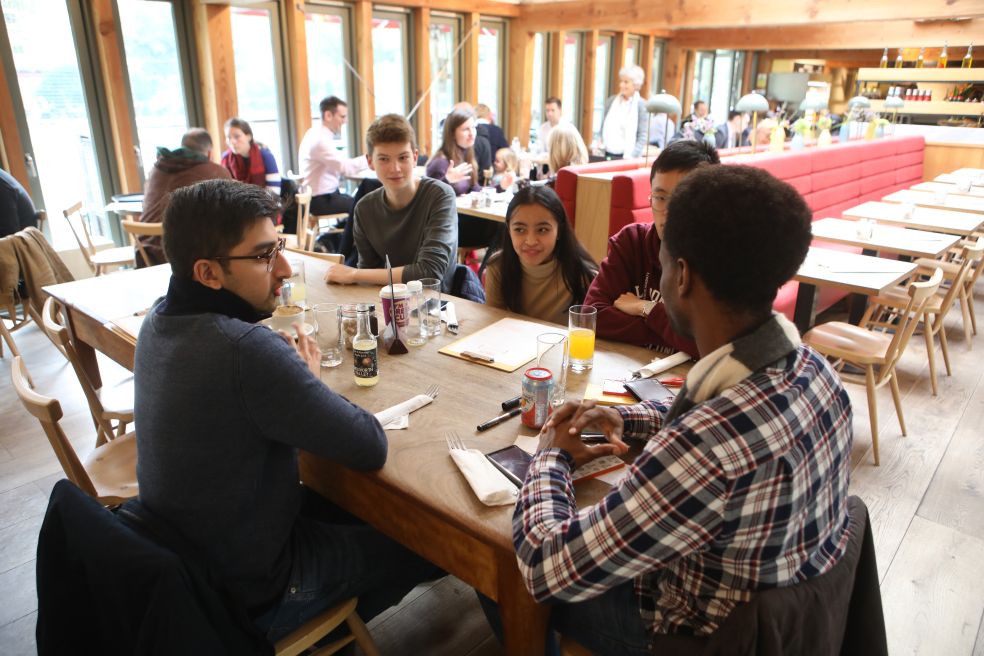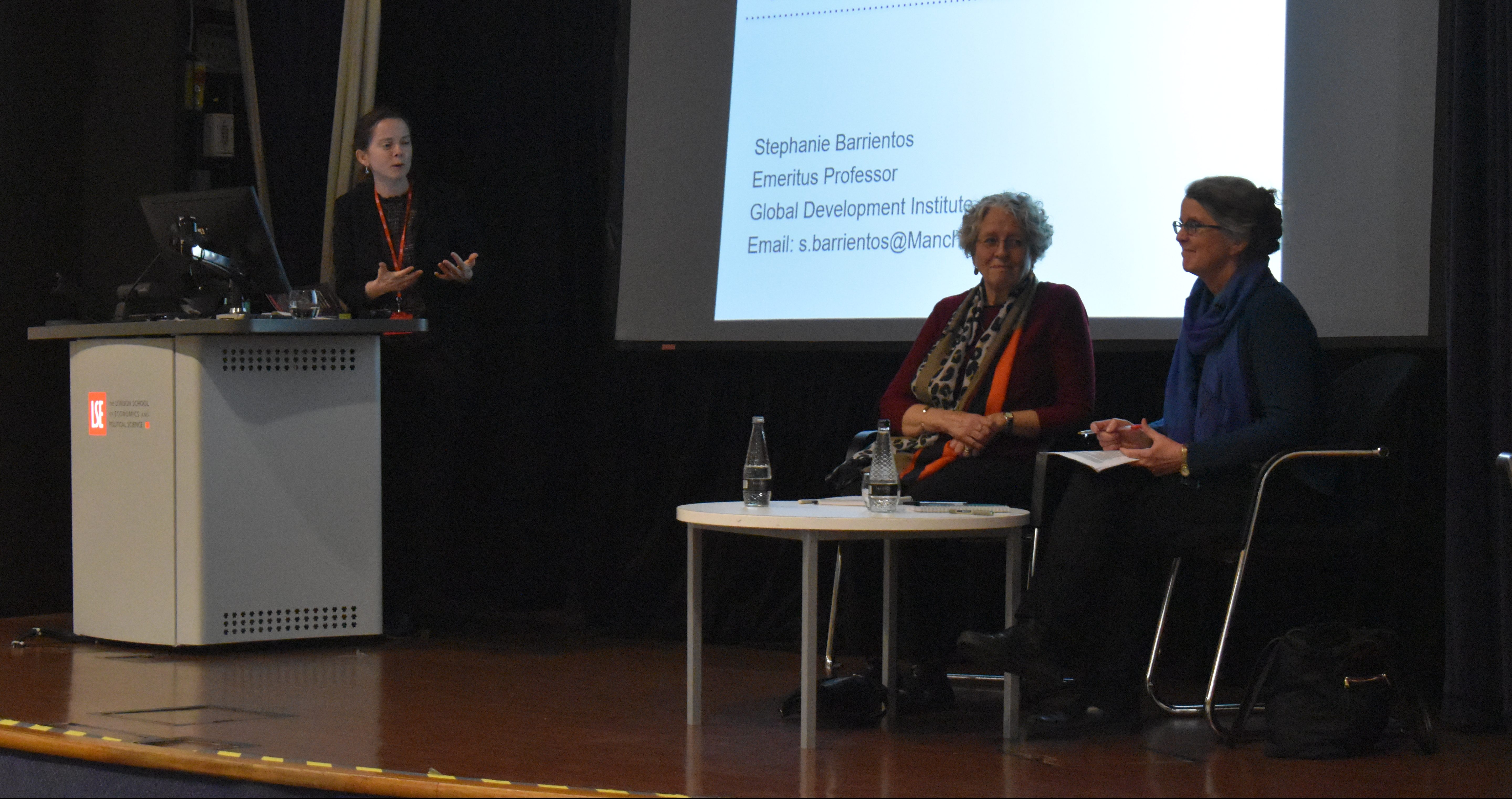MSc Development Management students Ben Gebhardt, Sharon Sagues, Cristina Viladomiu and Gen Kawasaki, tell us about their trip to Port-au-Prince, Haiti, where they researched the city’s creative sectors as a means of economic growth.
The research trip informed the group’s Development Management consultancy project with the Inter-American Development Bank (IDB).

In the past couple of decades, the international development community has paid increasing attention to the economic potential of cultural/creative industries. From the visual arts to music to architecture, creative industries in developing countries employ many people and produce goods that are heavily sought after all across the world. Accordingly, development banks and international organizations have been exploring potential methods of strengthening the Global South’s creative sectors as a means of economic growth. At the forefront of the creative economy research is the Inter-American Development Bank (IDB). The IDB has conducted well known exploratory research of the vast – yet still untapped– creative/cultural economy of Latin America and the Caribbean. The “Orange Economy,” as they call it, is estimated to be worth $4.3 trillion globally, with a particularly strong presence in the vibrant cultures of Latin America.
Such numbers are certainly promising, but how exactly can governments tap into the Orange Economy to foster development? To answer this question, and to fulfil the compulsory consultancy component of the MSc in Development Management, we teamed up with the IDB’s Haiti office and explored the feasibility of developing a creative district in Port-au-Prince.
In order to carry out this assignment, though, typical desk research and remote interviews simply would not get the job done. Academia has produced frustratingly little on the topic of creative districts in developing countries and many of the Orange Economy stakeholders in Haiti operate very informally (and would thereby be difficult to interview remotely). Moreover, in order to aptly complete a project that is a matter of urban policy, one must become familiar with the geography and the overall landscape of the location under examination. So, with the support of the IDB and the Department of International Development, the four of us went to Port-au-Prince to carry out original field research.
Our trip to Haiti was an incredible experience that yielded promising work for future study of the Orange Economy in the country. For one week, we traveled around Port-au-Prince to interview stakeholders in the creative industry. We were blown away by the amount of talent and vibrance that the city had to offer. Creativity is everywhere in Port-au-Prince: if the colorful tap-taps, the skillful handicrafts, and the canvas-covered side of the roads don’t manage to impress you enough, you can also find notable architecture from the 19th century, fine art galleries, and fashion design that strikes a balance between the traditional and the contemporary. Furthermore, not only did we find a great variety, but we also found that the city hosts great potential for a creative district, as some of these artistic expressions already cluster around specific neighborhoods: the metal workers of Croix-des-Bouquets and the voodoo-inspired art of Bel Air are two notable examples of such districts. The Haitian capital is rich in cultural products– and, given that we did not get a chance to research the music industry or the performing arts, the incredible variety that we saw during our week in the city is certainly just the tip of this Orange iceberg.
As we were no experts in Haitian art and handicrafts, we relied on our key informants from different sectors, managing to interview artists, designers, government officials, the editors of the only daily newspaper, gallery owners, members of the non-profit sector dedicated to facilitating culture, etc. In only one week’s work, we interviewed a disparate– yet influential– group of the major stakeholders in Port-au-Prince’s art scene, leaving us with promising research and a great enthusiasm for the future of the Haitian creative economy.
Aside from honing our research skills in the field, we profited from excellent mentorship from the IDB and friendship from the locals of Port-au-Prince. Our project supervisors, Nicola Magri and Ana Maria Saiz, did their utmost to ensure that we collected all of the necessary information and introduced us to the IDB’s facilities/faculty. Koldo Echebarria, the Country Representative of the IDB in Haiti, took the time to introduce us to the Bank’s mission and approach regarding Haitian development. Dr. Pascale Jaunay, an expert in Haitian culture and current research consultant with the Bank, accompanied us on many of our interviews and shared her knowledge of the creative sector with us. And, of course, we made excellent friends from Haiti during our time there– we even, rather serendipitously, had the good fortune of running in to James Robinson, co-author of Why Nations Fail, and Jonathan Weigal, an incoming faculty member of the LSE’s Department of International Development!
Our trip to Haiti was an incredibly rewarding experience, both in terms of the research we collected and the life experience that we garnered. We would like to extend a warm thank you to the Inter-American Development Bank’s office in Port-au-Prince and to the faculty of the Department of International Development for making such an experience possible. Now, we are eagerly drafting our final report and preparing for our presentation in April. We hope that you will stay tuned, follow our work and keep track of the tremendous potential of the Orange Economy in Port-au-Prince!

Ben Gebhardt, Sharon Sagues, Cristina Viladomiu and Gen Kawasaki are current students in the MSc in Development Management program at the London School of Economics and Political Science. They can be reached by email at: ben.gebhardt01@gmail.com ; cristinaviladomiu@gmail.com ; or on LinkedIn.
The views expressed in this post are those of the author and in no way reflect those of the International Development LSE blog or the London School of Economics and Political Science.





